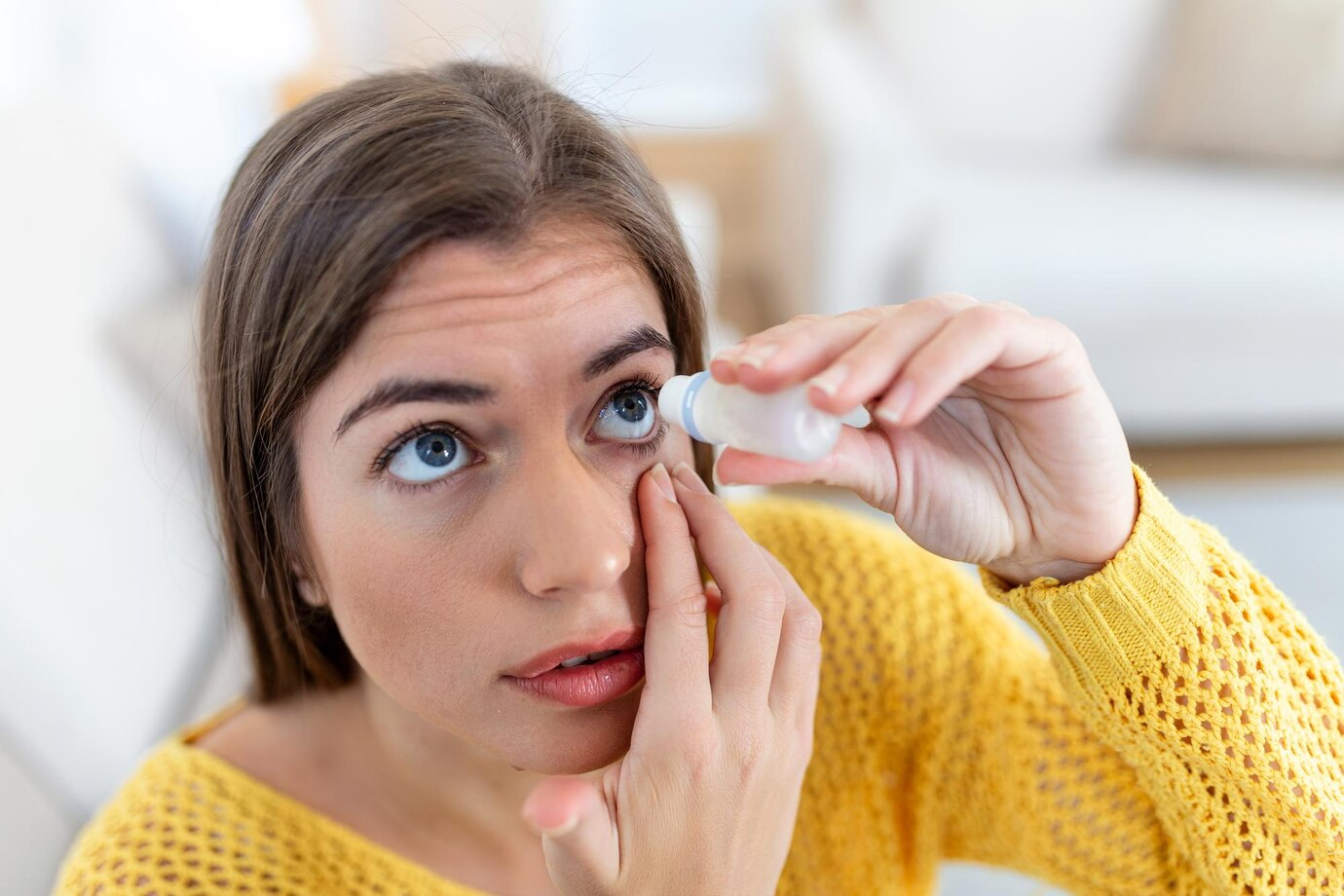Eye dryness affects many people throughout the year. With each season bringing its challenges, it becomes crucial to protect our eyes year-round. Understanding ocular dryness symptoms and discovering effective strategies can help maintain comfortable vision every day.
An Overview of Eye Dryness Through the Seasons
Eye dryness is a common issue, with many people experiencing discomfort, burning, or redness. It is important in the field of eye care, as it can impact daily life by causing strain and fatigue. Dryness of the eyelid may also interfere with clear vision.
Different seasons have unique impacts on tear production, a crucial component for preventing eye dryness. In various climates, either the air lacks moisture or environmental factors affect our eyes. This causes a variety of challenges depending on the time of year. During colder months, dry air and indoor heating can increase the evaporation of tears, leading to eye dryness. As warmer weather rolls in, the combination of heat and air conditioning poses similar threats.
Meanwhile, in monsoon climates, allergies and the fluctuation in humidity contribute to eye dryness disease. High pollen counts and dust levels can irritate the eyes, making occular dryness symptoms worse. To keep eyes healthy, it’s essential to understand how these seasonal changes impact tear production and to adapt our routines accordingly.
Seasonal Challenges and Solutions for Eye Dryness
Winter brings cold air that lacks moisture. Indoor heating can further dry out the eyes, causing tears to evaporate more quickly. This is when many notice an increase in eye discomfort. So, how can we manage this?
- Use a humidifier indoors to add moisture to the air.
- Stay hydrated by drinking plenty of water throughout the day.
- Wear wrap-around glasses or goggles when outdoors to protect from harsh winds.
In summer, eye dryness may be due to a different culprit — air conditioning. Cooling systems can strip moisture from the air and cause dry air exposure. This increase in dryness affects easily. For relief during summer months:
- Limit the use of air conditioners if possible or direct the airflow away from your face.
- Use artificial tears to keep eyes lubricated.
- Wear sunglasses that block UV rays to protect your eyes from the harsh sun.
During the monsoon season, environmental allergens, such as pollen, become a major concern. This combined with the fluctuating humidity levels can both irritate and dry out the eyes.
- Keep windows closed during high pollen days to limit exposure.
- Regularly clean home surfaces to remove dust and allergens.
- Consider wearing glasses instead of contact lenses to reduce irritation.
Practical At-Home Remedies and Lifestyle Adjustments
Finding home remedies for dry eyes can greatly aid in minimizing discomfort. Here are a few effective approaches:
- Employ warm compresses: Apply to closed eyelids to help increase moisture.
- Practice good eyelid hygiene: Regularly clean eyelids to remove irritants.
Managing screen time is also crucial. Excessive use of digital devices has been identified as a key factor in dry eyes causes. Implement these steps:
- Follow the 20-20-20 rule: Every 20 minutes, look 20 feet away for 20 seconds.
- Reduce brightness and glare on screens to lessen strain.
A diet rich in omega-3 fatty acids can further improve eye health. Foods like fish, nuts, and seeds encourage healthy tear production. Nutritional adjustments make a great dry eye solution that aligns well with other strategies.
Medical Interventions and Professional Guidance
Sometimes, everyday fixes aren’t enough. If eye dryness persists, seeking professional guidance is key. Recognizing when to see a doctor can prevent long-term issues.
- Persistent redness, irritation, or pain could indicate need for medical evaluation.
Over-the-counter treatments, like artificial tears, offer immediate symptom relief. However, persistent symptoms may require prescription solutions tailored to individual needs. These can provide long-term relief not achievable with eye dryness home remedies alone.
Advanced therapies are available, especially for chronic dry eye cases. Procedures like punctal plugs or specialized eye drops can offer relief where other treatments fail. They help maintain moisture balance to naturally combat eye dryness disease.
Consulting with a professional not only helps find personalized solutions but also educates patients on maintaining optimal eye health. Their insights can improve quality of life by preventing symptoms of ocular dryness from getting worse.
Conclusion and Resources for Ongoing Eye Health
Summarizing the key takeaways: Effective management of eye dryness requires adapting to seasonal challenges, using home remedies for dry eyes, and knowing when professional help is needed. Prevention, through habits like regular hydration, using artificial tears, and maintaining eyelid hygiene, remains the best defense against eye dryness.
For further information and support, visit reputable eye care websites and consult eye care specialists. Being informed helps make the best decisions for your eye health every day. Connect with professionals to access the latest treatments and therapies tailored to personal needs. Your commitment to eye care ensures clarity and comfort throughout every season.
